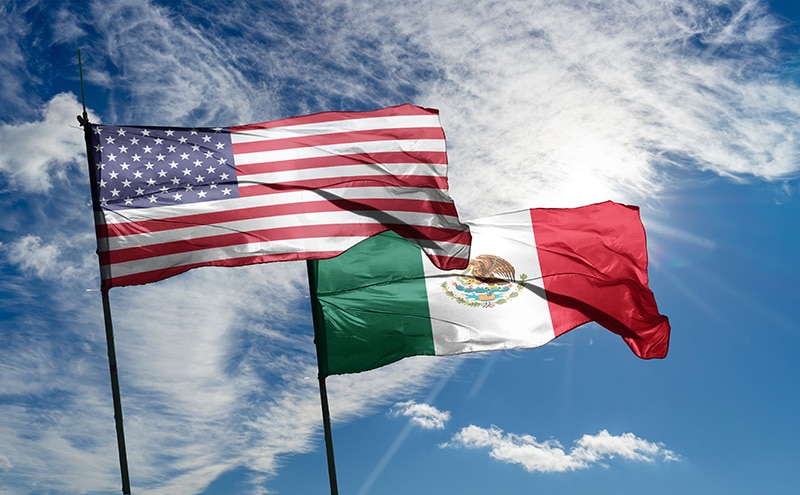
JOC.COM
William B. Cassidy, Senior Editor
February 08, 2022

JOC.COM
William B. Cassidy, Senior Editor
February 08, 2022
US importers searching for faster ways to move freight through congested ports are turning to new partners, including traditionally domestic-focused less-than-truckload (LTL) carriers. With truckload and intermodal rail capacity tight, and space limited for warehousing and transloading, shippers are asking their LTL carriers for help in getting international freight from ports into inland distribution networks faster.
“Two or three years ago, we didn’t see ourselves at the ports, but we’re there now,” Geoffrey Muessig, chief marketing officer for regional LTL carrier Pitt Ohio, said in an interview.
“Our LTL customers tell us about problems at ports where the warehouses are overflowing, and they’re asking us for solutions.” The carrier’s solution is to get the container to an LTL terminal where it is deconsolidated, and then ship the goods as truckload or LTL shipments to the customer’s distribution center (DC) — in other words, transloading.
Demand for transloading skyrocketed as imports surged in 2020 and in 2021, but the construction of transload facilities, which need container space and cross-docks, has lagged that demand.
Ocean container lines no longer want to send their interior point intermodal (IPI) containers far inland, and that generates more transload demand nearer to ports. “The problem is they donʼt have the infrastructure” to deconsolidate all that freight, Muessig said. “Weʼre pulling the container 250 miles inland to deconsolidate it and return it.
”Itʼs an expensive solution at close to expedited rates, but for many importers, especially smaller ones, itʼs one of few options. “If youʼre an occasional or mid-sized importer, youʼre struggling,” said Muessig. “The largest shippers get priority; theyʼre the ones with relationships with the steam ship lines and freight forwarders.” And those importers get first dibs on inland distribution capacity.
With the cost of railing IPI containers inland reportedly rising fast in shipper contract negotiations with container lines, transloading may be a cheaper alternative, even at “almost expedited” rates. Shippers have told JOC.com they are being asked to pay rates four or five times higher than the previous contract price to move ocean containers from ports on the East and West coasts to points inland.
When looking for transloading, shippers usually turn to logistics companies with transload facilities, such as RoadOne IntermodaLogistics, which has been expanding transloading operations on the East and Gulf coasts. But increasingly, LTL trucking companies see transloading containerized freight as another way to attract new customers and to gain more freight from existing customers.
Interest in transloading also follows an expansion of retail goods in the traditionally industrial LTL freight mix. “Several years ago, an LTL carrierʼs freight mix would have been largely industrial with a sprinkling of retail around the edges,” Darren Hawkins, CEO of LTL operator Yellow, said in an interview.
“The retail side has become much more pronounced as the pandemic has changed buying behavior,” Hawkins said. Not only is more freight moving in smaller shipments, but consumers are buying larger items such as appliances online that are too large to be handled by a parcel delivery service.
LTL carriers already have the type of facilities needed for container deconsolidation: terminals with plenty of doors, a cross dock, and space to store trailers and containers. That type of facility — and land — is extremely difficult to find and building a new facility from the ground up can take two to three years.
For the carriers themselves, transloading can provide a new source of freight to fill more cubic feet in LTL trailers.
“Part of the reason these guys are looking at transloading is as a backhaul, especially when youʼre coming out of a big consumer market like Southern California,” Ken Kellaway, president and CEO of RoadOne IntermodaLogistics, told JOC.com.
Some LTL carriers may see it as an occasional service they can offer customers, but others are investing significant money in larger terminals near ports.
“We are prioritizing port facilities,” said Webb Estes, vice president of process improvement at Estes Express Lines, the largest privately owned US LTL trucking company and fourth-largest overall by annual revenue in 2020. “We absolutely have customers that are begging us to pick up loads at the ports and expedite them.”
Estes Express plans to replace a 25-door facility in Savannah, Georgia, with a 125-door terminal currently under construction. The Richmond, Virginia-based carrier also handles deconsolidated freight from the ports of Norfolk, Virginia, and Charleston. “Charleston used to be a heavier inbound market for us, but at this point we have more outbound from Charleston than inbound,” he said.
Estes is also building a new terminal in Southern California that will offer transload services, and looking for property in eastern Pennsylvania to provide more transload service from the Port of New York and New Jersey.
“We see no shortage of freight coming into the US in the coming years,” Estes said. “Itʼs the name of the game.”
The game isnʼt just played for capacity. By deconsolidating containerized freight near ports, LTL carriers can link the first inland mile with “middle-mile” distribution — the transportation of retail goods between DCs and stores or e-commerce fulfillment centers. That middle mile is increasingly reliant on LTL carriers, as shipments become more frequent and smaller.
The LTL sector is divided on whether to pursue the “last mile” — direct delivery to consumer homes — but several LTL carriers do offer last-mile delivery service. By deconsolidating containerized freight near its point of entry, they can keep that freight in their networks from port to porch.
LTL carriers and transload services can also reroute goods on their arrival in the US. That means deconsolidated freight could be routed from the terminal near the port direct to multiple stores or other points using a “direct-to-consumer” distribution model.
This influx of new buying activity is forcing freight to go to LTL simply because of the size of the shipment.
“Supply chains are evolving to be more direct-to-consumer with smaller order quantities, and this influx of new buying activity is forcing freight to go to LTL simply because of the size of the shipment,” Randy Ofiara, vice president of managed logistics sales at BlueGrace Logistics, said in an interview.
“Itʼs not just capacity overflow, itʼs consumer behavior that is altering the shape of North American distribution,” Ofiara said.
That suggests LTL, long considered the most domestic of US transportation modes, will have a more prominent role in international supply chains as the recovering global economy creates greater demand for expedited transportation and capacity. US LTL networks that were once either national or regional also are increasingly multiregional in structure, following the more regionalized flow of freight.
LTL executives are looking beyond the local freight dock and thinking about how LTL fits within a global logistics network. “When LTL companies talk about international, weʼre often talking about Canada and Mexico, and not as often about planes and container ships,” Estes said.
Thatʼs changing as what used to be a trickle of internationally sourced freight becomes a flood.
Get expert logistics insights delivered straight to your inbox
"*" indicates required fields